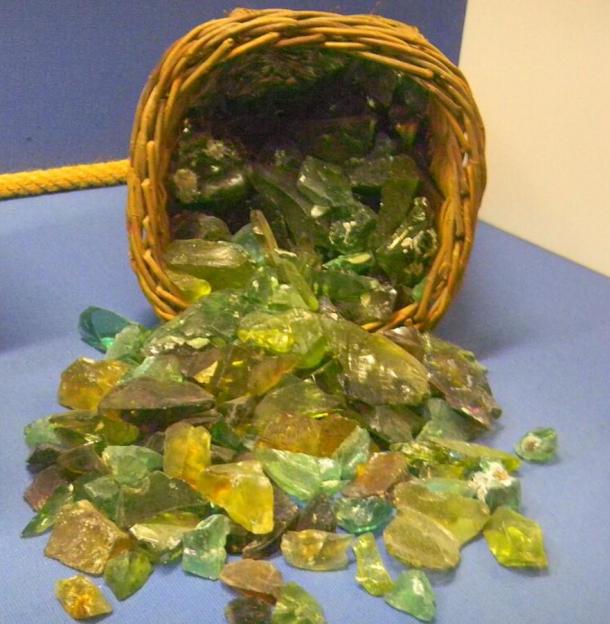🔴 Website 👉 https://u-s-news.com/
Telegram 👉 https://t.me/usnewscom_channel
The bottom of the Mediterranean Sea holds many secrets, many of which we will never uncover. But diver archaeologists are nevertheless keeping themselves as busy as can be. They survey the depths in attempts to uncover some truly intriguing things. And the Serçe Limanı wreck was just the thing they were looking for. Discovered in the eponymous bay in Turkey, opposing the Greek island of Rhodes, the shipwreck was a truly marvelous find. What wonders were hiding in its cargo hold?
The Wonders of the Serçe Limanı Shipwreck
The noted American maritime archaeologist, George F. Bass, regarded as the father of underwater archaeology, discovered the Serçe Limanı shipwreck in 1977 on one of his routine dives. Noting at once that this was a major discovery, he and his team from the Institute of Nautical Archaeology (INA) began an arduous excavation campaign that went on for several years. The wreck was on the bottom of the Mediterranean Sea, but somewhat close to the shore, and was partially preserved. Around 20% of the hull survived through the centuries, even though most of it was fragmented. Still, for underwater wooden remains, this is quite a good state of preservation.
Retrieving this wreck, however, was an altogether different matter. It required patient work and detailed observations, and some new innovative solutions. Because of this, the work at Serçe Limanı has been considered a milestone in underwater archaeology. The work that Bass and his team completed set new standards for excavations to follow, thanks to the extensive documenting of the finds and the layout of the wreck itself. And it is because of the patience and detailed work of the INA team that the finds were pulled out completely and yielded an impressive array of glass fragments. In fact, the Serçe Limanı wreck contained the most substantial amount of Islamic glass ever found in a single location.
The Serçe Limanı Shipwreck is located in Turkey. (Karte: NordNordWest/CC BY-SA 3.0 DE)
The Submerged Masterwork
The Serçe Limanı shipwreck has been positively dated to roughly 1025 AD. It was a relatively small merchant ship, described as a Byznatino-Slavic vessel. Its crew was likely composed of Bulgarian merchants and was described by the INA team as “ a small two-masted vessel with lateen sails. The mainmast was stepped slightly aft of amidships, and the foremast, with a somewhat smaller sail, had probably raked forward over the bow. The ship had an overall length of perhaps only 50 Byzantine feet (15 m) and a breadth of 17 Byzantine feet (5.3 m).”
However, it was not such an ordinary vessel for its time, as closer inspection suggests. The ship’s hull shows some of the earliest evidence for “frame-first” construction. In this method of shipbuilding, many of the frame elements are attached to the keel, before the standard planking procedure. Besides this, the wreck possessed other innovative features, such as a lack of planking edge joinery, and a keelson attached to the keel.
But best of all was its cargo.
The Glass-masters of the Islamic World
The cargo of this ship wasn’t full of treasure, gold, or other valuables. Instead, it carried some three tones of broken glass pieces. Acting as ballast, the glass shards came from everyday objects, such as glasses, pots, and plates. But they were not waste. Instead, the merchants transported them to a place where they would be recycled, and once more become luxurious glass items. This shows an early practice of recycling glass in the Islamic and Byzantine worlds.
Glass from the Serçe Limanı Shipwreck. (Elisa Triolo/CC BY-SA 2.0)
But for archaeologists today, these broken pieces yielded a wealth of knowledge and resources. They showed key insights into the art of Islamic glass making, and its luxurious decoration techniques. The cargo of glass displayed a variety of colors and styles. Rich hues of glass and amber colors, of green, red, and colorless glass displayed a sense of art in everyday items. The remnants were crucial for further studies of art styles popular during the Abbasid period, from 750 to 1258 AD, and the Fatimid Egypt period, from 969 to 1171 AD. Besides the shards, the ship carried intact glazed bowls, some eighty pieces of intact fine glassware from Islamic workshops, copper items, cooking vessels, and some food as well.
The Secrets of the Sea
The Serçe Limanı wreck is far from ordinary. It reveals many secrets about early medieval maritime trade, and especially about the highly developed Islamic glass industries of the time. Judging by the cargo of this ship, its provenance and its crew, we can conclude that the Mediterranean sea of that time was a vibrant space that connected Europe with the Near East and North Africa, and where maritime trading reached its highest levels. But most of all, it tells us that recycling and preserving items was well known, even in 1025 AD, and before.
Top image: Remains of the ship in the Bodrum Museum. Source: © José Luiz Bernardes Ribeiro
References
Kröger, J. 1995. Nishapur: Glass of the Early Islamic Period. Metropolitan Museum of Art.
Mango, M. M. 2009. Byzantine Trade, 4th-12th Centuries: The Archaeology of Local, Regional and International Exchange : Papers of the Thirty-eighth Spring Symposium of Byzantine Studies, St John’s College, University of Oxford, March 2004. Ashgate Publishing Ltd.
Various. 2004. Serçe Limani: An Eleventh-Century Shipwreck Vol. 1, The Ship and Its Anchorage, Crew, and Passengers. Texas A&M University Press.

